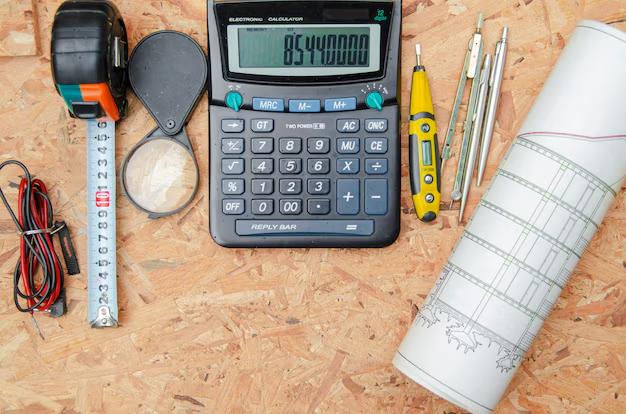How to Build Your Own Credit Repair Kit: Step-by-Step Guide
Improving your credit score might seem like a daunting task, but with a little guidance, it's entirely possible to tackle this challenge on your own. A "Do It Yourself Credit Repair Kit" can empower you to take control of your financial future. By understanding the steps involved, you'll be able to effectively address issues on your credit report, improve your score, and manage your credit responsibly.
Why Consider DIY Credit Repair?
Understanding Credit Scores
Your credit score is a critical part of your financial identity. It influences everything from loan approvals to the interest rates you're offered and even your ability to rent an apartment. The score itself is derived from five main factors: payment history, amounts owed, length of credit history, new credit, and credit mix.
Empowerment Through DIY
Taking the DIY approach to credit repair means you're actively engaging with your financial health. It offers empowerment by giving you the tools to monitor, manage, and improve your credit standing without relying on costly third-party services. Many individuals find that this hands-on approach not only saves money but also provides a deeper understanding of personal finance.
📑 Essential Steps to Repair Your Credit
1. Obtain Your Credit Reports
Start by getting copies of your credit reports from the three major credit bureaus: Equifax, Experian, and TransUnion. You're entitled to one free report from each bureau annually. Review these reports in detail to ensure all information is accurate and up-to-date.
2. Identify and Dispute Errors
Errors on credit reports are not uncommon and may include incorrect personal information, unfamiliar accounts, or incorrect account statuses. Dispute these errors directly with the credit bureaus. Provide documentation supporting your claim and request corrections. This process can lead to the removal of inaccurate negative items, potentially improving your score.
3. Pay Down Outstanding Debts
Tackling high balances on credit cards can significantly impact your credit score. Aim to lower your credit utilization rate by paying more than the minimum monthly payment wherever possible. Aiming for a utilization rate below 30% is often suggested by financial experts.
4. Establish Positive Credit Habits
While addressing negative items is essential, cultivating positive credit behavior is equally important:
- Timely Payments: Set up automatic payments or reminders to ensure bills are paid on time.
- Balance Removal: Keep older accounts open while reducing existing balances.
- Diversified Credit Usage: Manage a mix of credit types, including revolving (e.g., credit cards) and installment (e.g., loans).
5. Monitor Your Progress
Make use of credit monitoring tools to keep an ongoing eye on your score. Monitoring helps you stay informed about changes and alerts you to any unusual activity that might require attention.
📊 Quick Credit Repair Checklist
Here's a quick reference guide to assist you on your DIY credit repair journey:
- 🔍 Get Credit Reports: Annual free reports from each bureau.
- 🛠️ Dispute Errors: Contact bureaus with documentation.
- 💸 Reduce Debt: Prioritize high-interest balances.
- 🗓️ Pay on Time: Automate payments.
- 🔄 Use Different Credit: Maintain a mix of account types.
- 📈 Continuous Monitoring: Protect against fraud and track progress.
Tackling Common Credit Repair FAQs
What Impact Do Late Payments Have?
Late payments can stay on your credit report for up to seven years and significantly hurt your score. Pay off overdue balances and establish a history of timely payments to mitigate their impact over time.
How Long Will It Take?
Credit repair is not instantaneous. Some may see improvements in a few months, while others might take a year or more, depending on the severity of their issues. Consistency is key.
Should I Close Unused Credit Accounts?
While it might be tempting to close unused credit accounts, doing so can negatively affect your score by reducing your available credit and shortening your credit history. Consider keeping accounts open, particularly if they have a long history.
Can Settled Debts Be Removed?
"Settled" indicates you've paid less than owed, and it remains on your report even if the balance is zero. Creditors might agree to remove these marks if you negotiate directly, often benefiting your score.
What Should I Do About Collections?
Validation is your first step if you have accounts in collections. Request debt validation to ensure all amounts are correct. After confirmation, you'll want to negotiate with collectors for a "pay for delete" agreement, where payment might lead to removal from reports.
Is Professional Help Ever Necessary?
DIY credit repair is effective and affordable for most. However, if you encounter legal issues or are unable to identify resolutions, consulting a credit counselor might be beneficial.
Maintaining Good Credit Hygiene
Once you've made strides in repairing your credit, it's crucial to maintain these habits over time. Here’s how:
- Regular Review: Annually check credit reports.
- Identity Theft Protection: Watch for unusual activity and quickly address any errors.
- Financial Education: Continue learning about credit and finance management strategies.
Sustainable Financial Practices
- Budgeting: Track expenses and save toward goals.
- Emergency Fund: Build a safety net to handle unexpected costs without relying on credit.
Final Thoughts
Building and maintaining a good credit score is a lifelong journey. A DIY Credit Repair Kit is more than a temporary fix—it’s a set of skills and practices. By taking proactive steps to monitor and manage your credit, you'll create a foundation for financial health that enables more freedom and security in your financial future. Embrace the power of knowledge, responsibility, and consistency as you navigate the landscape of credit repair.

Related Topics
- A.i Credit Repair
- Are Credit Repair Companies Legit
- Are Credit Repair Companies Legitimate
- Are Credit Repair Companies Worth It
- Can You Repair a Credit Card Tha's Coming Apart
- Do Credit Repair Agencies Work
- Do Credit Repair Companies Work
- Do Credit Repair Services Really Work
- Do Credit Repair Services Work
- Do It Yourself Credit Repair